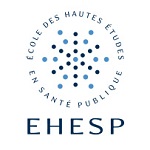Organic constituents [chapter 4]
Abstract
A lot of organic constituents in solution absorb in the UV–visible region. Dyes and colored compounds absorbed in the visible range, and colorimetry, using reagents with interesting optical properties, have been used for decades in analytical chemistry. However, numerous organic molecules with unsaturated bounds absorb in UV, as for example compounds with a conjugated structure (e.g., aromatic rings), and some of them are considered as UV-filters (e.g., benzophenones). The UV spectra of organic constituents can be exploited for their determination, if their concentration is detectable. In the case of trace analysis of pesticides or pharmaceuticals, an extraction step is necessary before UV detection. Moreover, the estimation of aggregated organic constituents (phenols, polycyclic aromatic hydrocarbons, and surfactants) is possible. For some nonabsorbing compounds, a derivatization with a UV response can be used for their analysis, and for some other, a simple photooxidation step can reveal their presence.
